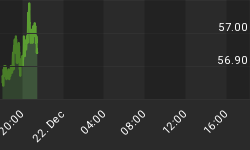In my previous commentary I introduced a hybrid approach to the work of George Lindsay that I have been developing to time short term highs and lows in the Dow Jones Industrial index. The approach called for a temporary low on 8/28/13. As of today, the intra-day low of the decline from 8/2/13, on 8/28/13, has not been broken.
The date listed for a high to the rally from 8/28/13 was 9/11/13. Centering a Middle Section forecast on the basic cycle low of 10/4/11 produces a forecast for a high on 9/11/13.
10/26/09 - the first day the Dow breaks down from a flattened top - counts 708 days to 10/4/11. Counting 708 days forward (from 10/4/11) forecasts a turn date on 9/11/13. Because 10/4/11 is a low, the forecast is for a high.
But the hybrid approach involved more than just a Middle Section count. It also used Lindsay's concept of Middle Section Chains to confirm the forecast date. A chain of roughly equal intervals (equidistances) of 199 calendar days can be found originating at point E of a Middle Section in early 2012 and extending between obvious (and some not quite so obvious) inflection points in the Dow.
The chain terminates on 9/12/13 - one day later than the Middle Section forecast on the previous page.
In a fashion typical of other chain examples the interval originating or terminating at a Middle Section is slightly off from the other intervals as if the Middle Section is a time of "catching up" for the interval.
This particular chain of intervals has been tracked back to 2006.
Request your free copy of the September Lindsay Report at http://seattletechnicaladvisors.com/contactus.html

















